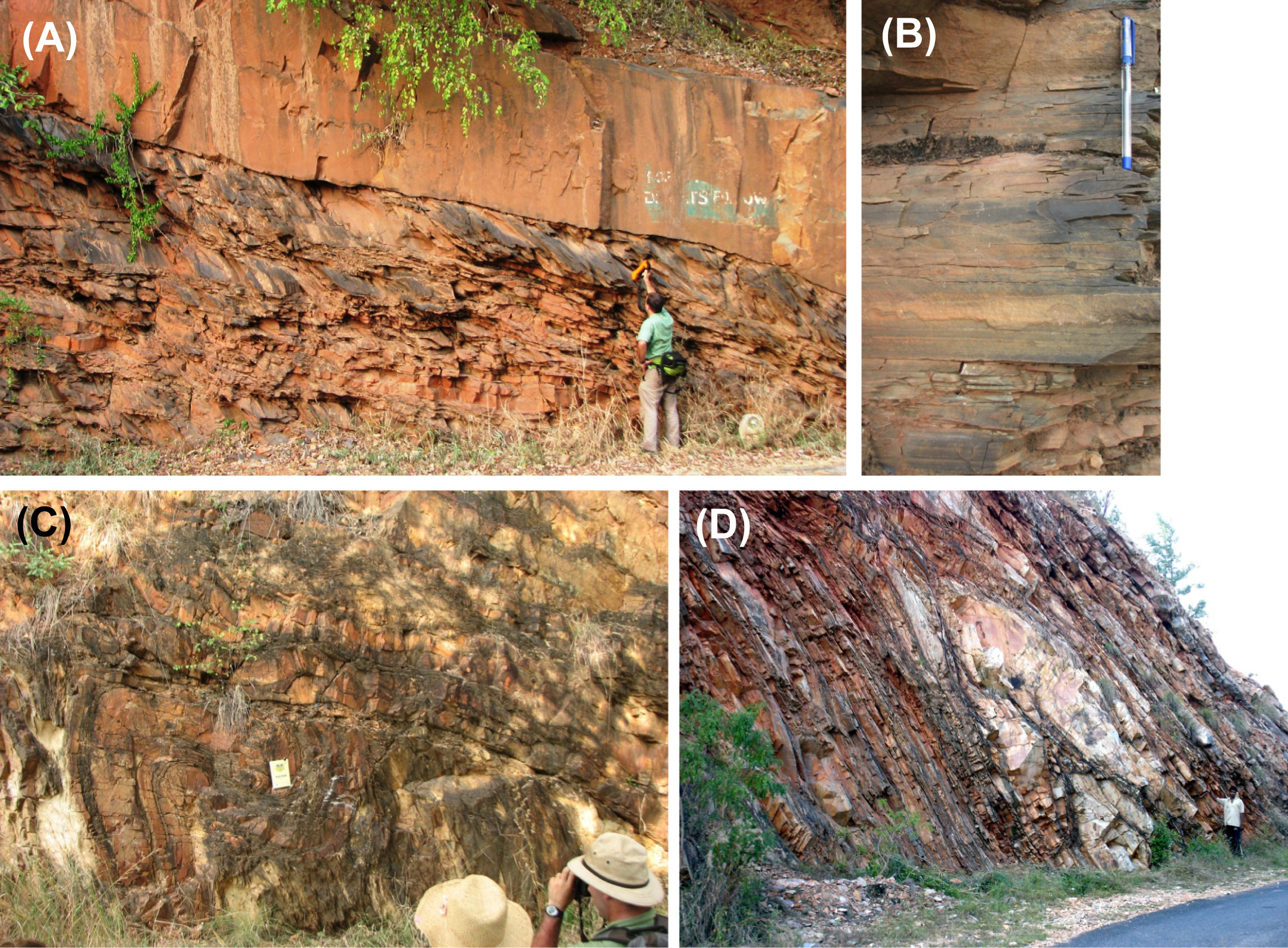Nallamalai Gr
Type Locality and Naming
Named after the Nallamali Fold Belt in mid-Cuddapah basin. The Nallamalai Group outcrops mainly as folded, faulted and cleaved low-grade sedimentary succession.
Lithology and Thickness
Sandstone and shale: Comprised of a lower Bairenkonda Quartzite Fm and upper Cumbum Fm. Very thick – total of 6000 m (6 km). In the east central part of the NFB, the Nallamalai Group consists of quartzite, quartz phyllite, slate, and minor dolomitic limestone, with cumulative thickness of 1200 m.
[Figure: Field photographs showing lithology and deformation features of the Nallamalai Group. (A) Bairenkonda Quartzite Fm (upper part): Thin bedded, intercalated sandstone-shale alternating with thicker sandstone. (B) Cumbum Fm: Plane laminated shale. (C) West vergent folds and faults truncating fold limbs, west margin of Nallamalai fold belt (NFB). (D) Tight folds and axial plane cleavage in intercalated phylliteequartzite, eastern margin of NFB. (from Saha et al., 2016)]
Relationships and Distribution
Lower contact
Unconformity (tectonic contact) onto Gandikota Quartzite Fm (upper Chitravati Gr; ca. 1850 Ma)
Upper contact
Unconformity (tectonic contact), overlain by Srisailam Quartzite Fm (ca. 1450 Ma)
Regional extent
GeoJSON
Fossils
Age
Depositional setting
Fan-delta at base to outer shelf, then peritidal at top
Additional Information
